試す 金 - 無料
Host A Feeding Frenzy!
Birds & Blooms
|April/May 2019
Maximize backyard traffic with tried-and-true tips from the pros.

A bird feeder is like a window to the natural world. It gives you a chance to delight in the antics and beauty of birds for hours of joy and learning. Best of all, feeding backyard fliers is simple—anyone can do it. Follow these tips to make the experience even better for you and for the birds.

Keep Up with Cleaning
A clean feeder is essential, and it’s definitely something to keep in mind when you’re buying or building a new one. In addition to how attractive it looks, how sturdy it is, and how much seed it holds, consider how easy it will be to clean a particular feeder. And then it’s important to follow up by cleaning them thoroughly—once every few weeks for seed or suet feeders, once every few days for hummingbird feeders, and even more often in hot and humid weather.

Skip the Red Dye
Experts agree that red dye in hummingbird food is not only unnecessary, it could actually harm hummingbirds. The safest, most inexpensive way to provide hummingbird food (aside from adding native plants) is making your own: Stir four parts water with one part pure cane sugar. Bring to a boil, cool completely and fill your feeders.

Go Beyond Seed
このストーリーは、Birds & Blooms の April/May 2019 版からのものです。
Magzter GOLD を購読すると、厳選された何千ものプレミアム記事や、10,000 以上の雑誌や新聞にアクセスできます。
すでに購読者ですか? サインイン
Birds & Blooms からのその他のストーリー
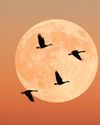
Birds & Blooms
Ready to Fly
For birders, spring migration is something to look forward to and be celebrated, but how do birds know when it's time to begin their travels?
2 mins
December 2025 / January 2026
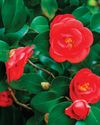
Birds & Blooms
COOL AS A Camellia
When temperatures drop, most plants wait out the chilly months, but camellias put on a show. Discover how to have these beauties thriving in your yard.
2 mins
December 2025 / January 2026
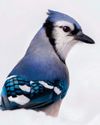
Birds & Blooms
Festive Feathers
Readers braved the winter chill to capture these snowy snapshots of the season's most beautiful birds
2 mins
December 2025 / January 2026
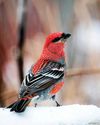
Birds & Blooms
Winter Gems
With raspberry-red feathers, pine grosbeaks cheer up chilly landscapes wherever they land
2 mins
December 2025 / January 2026

Birds & Blooms
the mysterious lives of NIGHTHAWKS
These creatures of contradiction aren't hawks and aren't the most active at night, but they are worth knowing
3 mins
December 2025 / January 2026

Birds & Blooms
Adventure Awaits
Pack your bags, get on board and find your next vacation destination in these captivating photos from far-flung travels
2 mins
December 2025 / January 2026

Birds & Blooms
It's All in the Needles
Get to know the greenery to identify these conifers
1 min
December 2025 / January 2026
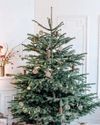
Birds & Blooms
Christmas Tree Do's and Don'ts
These pro tips will help you get the most out of this classic holiday fixture
2 mins
December 2025 / January 2026
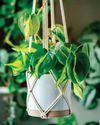
Birds & Blooms
Trailing Houseplants
Simple, easy-to-grow plants for hanging containers
3 mins
December 2025 / January 2026

Birds & Blooms
Better Off with Bats
Rethink the unsung heroes of the night and why you should support them
2 mins
October / November 2025
Translate
Change font size

